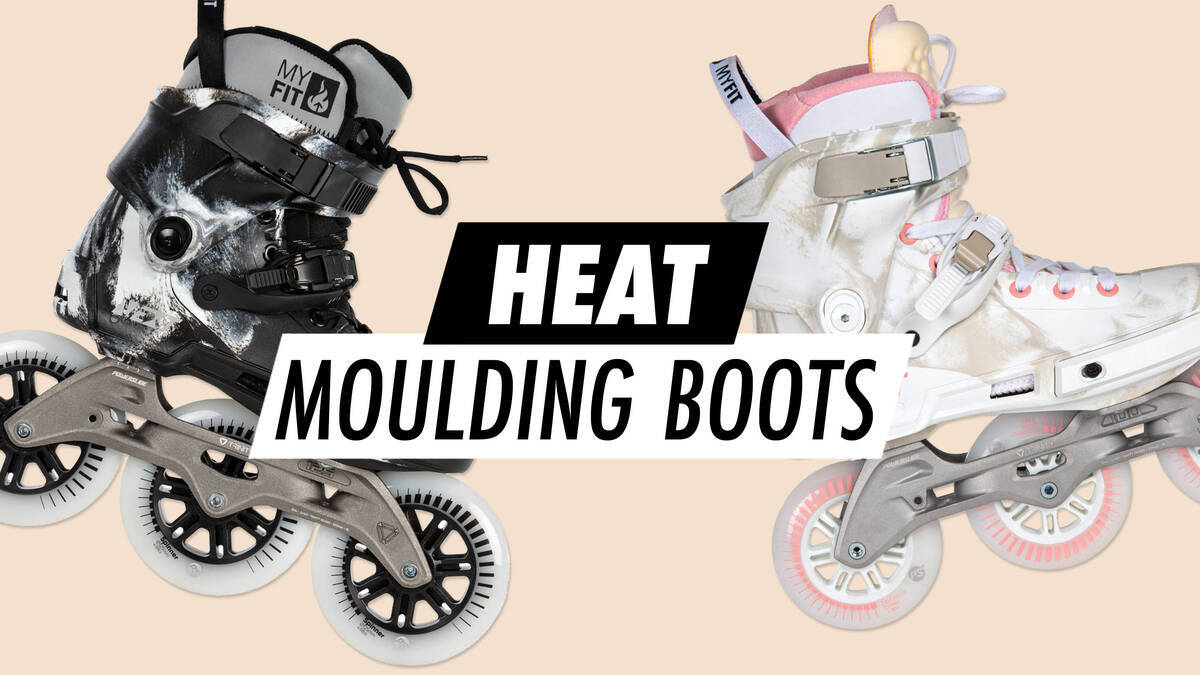How to Heat Mold Powerslide Boots


Thermoforming of Boots

SHMR-Tech Explained
SHMR, short for Super Heat Mouldable Resin, represents an innovative advancement utilised in contemporary racing footwear. These unique shell designs stand in sharp contrast to boots reliant on thermo sheets. We employ a distinctive heat-mouldable epoxy that integrates the various carbon fibre layers. Racing footwear equipped with SHMR-Tech can be moulded at any point on the shell, due to the presence of epoxy throughout the shell and interspersed among carbon fibre layers. A notable benefit is its ability to be heat moulded repeatedly without a decline in efficacy. The moulding temperature for racing footwear with SHMR-Tech is approximately 80-90 degrees Celsius, which is relatively low. Moreover, SHMR contributes to a slight weight reduction of the shell.
The following racing shoes highlight the new SHMR Technology:
- Powerslide: Double X, Vision, Vision Junior, Infinity, C8, PH9
- Core Racing: Vi-Pro, Icon, Triple X2
Thermo Sheets Legacy
Thermo sheets, a somewhat traditional technology, are still prevalent in numerous heat-mouldable speed boots. These sheets consist of thin, heat-mouldable composites embedded between the carbon layers of the shell. Historically, they have been employed predominantly around the boot's ankle region. The boot can only be moulded where these sheets are located, as carbon fibre itself lacks heat mouldability.
Thermo sheets have drawbacks: when exposed to repeated heating, they become brittle, limiting their usefulness. Powerslide and Core Racing shoes do not incorporate these sheets at all.
Steps to Heat Mould Your Skates
Powerslide and Core Racing carbon boots are completely heat-mouldable due to our exceptional SHMR technology, also known as Super Heat Moulding Technology.
To achieve optimal results, adhere to the instructions below.
These boots are designed for heat moulding either with an oven or a heat gun.
Note! Heat moulding can be executed on any shell part. We advise keeping the frame attached to the boots and fitting them while seated. Avoid placing full weight on the skates during the heat moulding procedure!
- remove the wheels and unfasten the laces and buckles
- set the oven temperature to 80 °C - 90 °C
- position the boot centrally within the oven
- allow the boot to remain for approximately 10-15 minutes until the cuff area shell softens
Warning: Avoid inserting your foot into a hot boot to prevent burns!
Metal buckles or eyelets might also cause burns on your fingertips!
- allow the boot to cool slightly and verify the temperature with a finger before stepping inside
- securely fasten the laces and buckles
- ensure your leg is correctly positioned for skating
- wait for the boot to solidify again
- use the plastic end of a screwdriver to adjust any discomfort-causing areas of the boot
- replicate the process for the other boot
If the outcome is unsatisfactory, the boots may be heat moulded multiple times.
Warning: Maintain a safe distance of approximately 20 cm from the upper leather when utilising the heat gun to avoid material scorching.
Which Speed Boots Can Be Heat Moulded?
Nearly all suppliers produce heat-mouldable speed boots. Consult local distributors or the manufacturer to determine if "thermo sheets" are employed in the carbon fibre boots or utilise a similar technology to that in Powerslide and Core Racing shoes. Remember, carbon fibre inherently lacks heat mouldability. Without this material layer, the boot cannot be heat moulded. An exception is the newly implemented SHMR Technology in Powerslide and Core Racing carbon fibre shoes.
Regulating Heat Moulding Frequency
With SHMR technology, moulding can be performed as often as needed.
Boots incorporating thermo sheets exhibit signs of wear after repeated mouldings. Thus, we advise moulding only when absolutely necessary. Custom boots might be a sensible consideration if fit issues persist despite heat-moulding attempts.
Why Do Powerslide and Core Racing Shoes Take Longer to Soften?
The key lies in the quality of the epoxy applied during shell manufacturing. Inferior epoxy softens at lower temperatures, thus the shell becomes more pliable with ease and speed. Many skaters perceive this as advantageous, but it is not. Our Powerslide and Core Racing shoes are constructed with only premium quality epoxy. Consequently, higher temperatures are needed to liquefy the epoxy, prolonging the time required for shell softening.
Shoes with shells that heat mould at very low temperatures may inadvertently start softening simply from being left in a vehicle exposed to direct sunlight.
